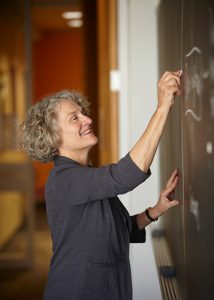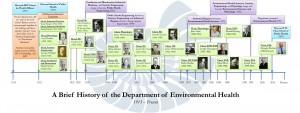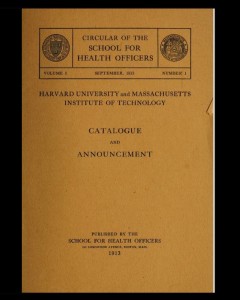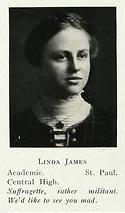
Portrait of Eleanor Dewey Mason, circa 1956. Image courtesy of the Schlesinger Library, Radcliffe Institute, Harvard University.
As we prepare to celebrate International Women’s Day, it has been a pleasure to research and highlight Dr. Eleanor Mason, a student and visiting scientist at the Harvard School of Public Health, now known as the Harvard T.H. Chan School of Public Health.
Dr. Eleanor Dewey Mason was born in Tura, Assam, India in 1898 to American Baptist missionary parents. After graduating from Newton High School, she earned her BA from Mt. Holyoke College (1919) and an MA from Wellesley College (1921). Her early interest was in zoology as well as missionary work, and after spending a year as a research assistant in genetics with the Carnegie Institute in New York City, she took advantage of an opportunity to become a zoology lecturer in India at Madras University.
On her first furlough from Madras, she came to Boston to pursue an MA (1928) from Radcliffe College. Later, she returned to Radcliffe and earned her PhD (1934). These degrees from Radcliffe involved vital statistic courses taken at the Harvard School of Public Health (HSPH), as well as courses taken at Harvard Medical School (HMS).
It is important to note that at this particular time, women took courses but could not receive degrees from HSPH or HMS. While the Harvard-MIT School for Health Officers (1913-1921) credentialed women on the same basis as men (with certificates in public health), this practice ended in 1921 with the withdrawal of MIT and an establishment of a Harvard degree-granting school of public health. Therefore, it isn’t surprising to see Dr. Mason listed in the 1927 HSPH course catalog as a vital statistics student, even though she is not considered a graduate of the program.
The time Dr. Mason spent at Harvard was seminal to her professional career. Her early interest in studying systemic zoology expanded to an interest in human physiology or, more specifically, how race and climate influenced metabolism. Dr. Mason also met Dr. F.G. Benedict, Director of the Carnegie Nutrition Laboratory, while studying at Harvard. Dr. Benedict had recently become interested in the possibility of racial differences in metabolism, and his lab provided Dr. Mason with financing and equipment for her research project. With this backing secured, Dr. Mason returned to Madras to resume teaching at the Women’s Christian College and complete her thesis–the first to establish basal metabolic norms for Indian women. This research was exceptional for its time, as Dr. Mason focused on non-traditional subjects. Two copies of Dr. Mason’s 1934 thesis, The metabolism of women in South India, with a note on the vital capacity of the lungs in South Indian women, are available at Harvard from the Center for the History of Medicine and the Harvard University Archives
In 1934 and 1940, Dr. Mason published on the basal metabolic rate of South Indian women in comparison to British and American women who travel from temperate to tropical climates. Her Western research subjects were colleagues who had also come to Madras to teach at the Women’s Christian College. Some of the women experienced a 10% drop in their metabolism as a result of the tropical climate, while others experienced no change at all. Dr. Mason’s results did show consistently that weight decreased and pulse rates fell in warmer climates, and that the basal metabolic rate of South Indian women was decidedly lower than that of British and American women.
In 1942, her research focused more on nutrition in rat models, with the intention of demonstrating the inadequacies of the rice diet common among the poor in South India. A 1945 paper examined the supplementary effects of casein, calcium lactate and butter, singularly or combined, on the growth of young rats. Casein and calcium lactate were found to have a highly significant effect in promoting growth, while butter affected both growth and general condition adversely. Casein, when added to butter, counteracted the negative effect of butter and converted it into a positive effect (Mason 1945). In a 1946 paper, she and her team experimented further with ragi (a cereal crop also known as Eleusine coracana, or “finger millet”) and found that, when substituted for rice, it had a marked stimulating effect on growth directly proportional to the amount given.
In addition to her physiological research in basal metabolism, and after years of teaching, in 1948 Dr. Mason became the third principal of the Women’s Christian College. In this role, she pioneered a home science courses for the students. In 1951, Mt. Holyoke College awarded her a honorary doctorate of science. In 1956, Dr. Mason retired from her role at Women’s Christian College and was invited by the University of Bombay to continue her research in the laboratory of Dr. A. Sreenivasan in the Department of Chemical Technology.
She moved into the Missionary Settlement for University Women, an interdenominational hostel comprised of fifty-eight British and Indian colleagues. Dr. Mason’s laboratory was modest: a room with two beds and measuring equipment, and connected to her own bedroom. Research subjects would be asked to fast for twelve hours. Once they arrived at the lab, they were instructed to lie quietly on one of the research beds and breathe into a spirometer for three eight-minute stretches while Dr. Mason and her assistant Mary Jacob, from Travancore, measured pulse, blood pressure, and temperature. After a day’s work, Dr. Mason would spend her evenings at the missionary leading prayers with the other hostel residents. She stayed in the settlement until 1964, then spent several years as a member of the ecumenical Farncombe Community in England before returning permanently to the United States in 1970.
It is clear from newspaper articles and from personal accounts that Dr. Mason returned to Boston to continue her involvement at the Harvard School of Public Health, likely as a researcher but also potentially as an educator. The Radcliffe Quarterly confirms that Dr. Mason was a visiting scientist at HSPH from 1963-1964. Contemporary faculty such as Joseph Brain and James Butler reflect fondly on their brief overlap with her at the school, including her involvement with physiology research and teaching, now considered part of the Department of Environmental Health.
In addition to her career at Harvard, Dr. Mason was a member of the tertiary Anglican Franciscan group, Christa Prema Seva Sangha, of the Society of the Companions of the Holy Cross. In later life, she served as a communicant and a parish receptionist for the Church of the Advent. She was also part of Windham House, the Graduate Training Center for Women of the Episcopal Church, which was a center for women studying theology and other disciplines.
Dr. Mason passed away in 1995 at the age of 97. Her body was donated to Harvard Medical School before being buried at Forest Hills Cemetery in Jamaica Plain.
Although the Center for the History of Medicine does not hold any unpublished records from Dr. Mason besides her thesis, records of her professional career can be found scattered across multiple repositories, including:
- The archives of the Society of the Companions of the Holy Cross, located at Adelynrood in Byfield, MA.
- The Eleanor Mason Letters, 1919-1950, digitized and transcribed by a private collector and alumna of Mt. Holyoke College
- The Schlesinger Library, the official repository of Radcliffe College, hosts biographical information on Dr. Mason in her student file (RG XXI, Radcliffe College student files, Series 2, Student Files, 1927-1970, Box 559) and in her deceased alumnae file (RG IX, Radcliffe College.
Alumnae Association, Series 2, Deceased Alumnae Folders, Box 213), all of which are open to research (but not made available in time for the publication of this blog post).
- Harvard Divinity School – Records of the Women’s Christian College, Madras, India, 1914-1979
- A young Eleanor Mason recounts a fire at Mt. Holyoke in which she and a faculty member heroically rescued materials from the burning physiology department
I wish to thank Jim Butler, Senior Lecturer on Physiology, for sharing stories and resources about Dr. Eleanor Mason, and for connecting me to the archives at the Society of the Companions of the Holy Cross, whose secondary source materials served as the backbone of this post. Dr. Mason was a colleague as well as a dear friend of his family, and without his persistence her story likely would have remained dormant in the archives. I also would like to thank Dr. Joe Brain, Cecil K. and Philip Drinker Professor of Environmental Physiology, and Yechaan (Eric) Joo, a graduate student at the Harvard Chan School, for their research on Dr. Mason’s publications and her connection to the Department of Environmental Health.
For a complete list of Dr. Mason’s publications, please visit the History of Public Health at Harvard LibGuide.








